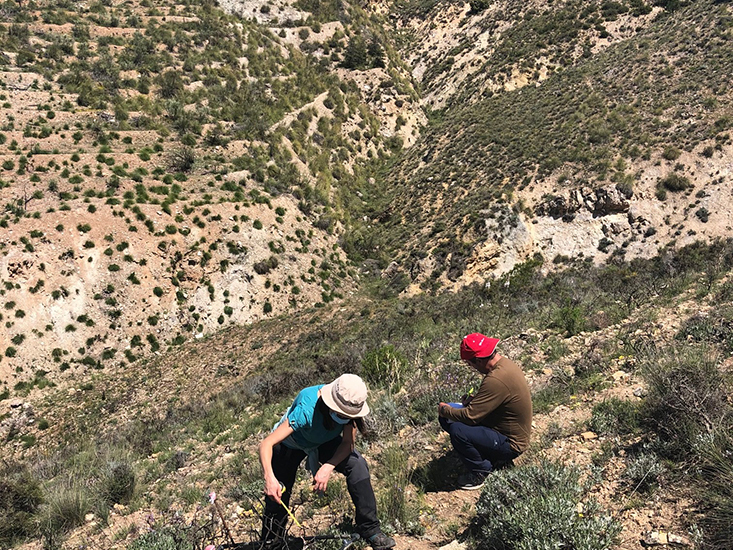- Inicio
- Actualidad
- Noticias
- Biodiversity sampling in burned areas in autumn and spring
Biodiversity sampling in burned areas in autumn and spring
28 mayo 2020
Between May 19 and 21, 2020, the EEZ-CSIC team, with the support of CMAOT staff, carried out the biodiversity samplings in the areas burned in the autumn (with grazing and without grazing) and in the areas burned in the spring ( with grazing). Two methodologies, already described in previous reports, were used: 1) evaluation of specific coverage and vegetation height within the fixed squares of one square meter that had been evaluated before and after burning (8 squares per plot, 4 plots of 500 m 2 for each burned area (with grazing and without grazing); and 2) assessment of biodiversity using the “Point Quadrat” method in a 20 m transect in each 500 m 2 plot (total: 4 transects per burned area), with evaluations every 20 cm. It was possible to verify how the vegetation is recovering (especially the esparto-Macrochloa tenacissima) as well as the increase in the number of species, although this will have to be confirmed once the data is analyzed. In the same way, it was possible to see a lesser development of the vegetation in the grazed areas, especially in some species such as the Helichtotrichon filifolium, which is highly desired by livestock when it sprouts after burning.
Compartir:
#CalidadSuelosAplicacionesMedioambiente
-
A pastorícia nas estratégias de valorização e gestão integrada dos territórios rurais: desafios e oportunidades
01 junio 2021
-
Curso de capacitação em tecnologia e qualidade da carcaça e carne ovina,
01 junio 2021
-
Phytovolume sampling in the field and drone flight to estimate phytovolume through images (Alcóntar pilot area, Almería)
09 diciembre 2020
-
Phytovolume sampling. Livestock capacity to control vegetation (Alcóntar pilot zone, Almería)
14 octubre 2020
-
The Portuguese media echo the study carried out by UTAD
29 junio 2020



















